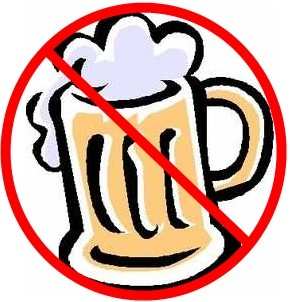Tue, Oct 07, 2014
Whether An Airline Pilot Or A Recreational Flyer, Alcohol And Drugs Just Don’t Mix With Flying
Piloting an aircraft under the influence of alcohol or drugs is obviously a stupid thing to do, and the FAA addresses this in FAR 91.17. The rule starts by saying a pilot may not fly in less than 8 hours after consuming alcohol. Of course, 8 hours may not be enough time to “sober-up,” so the FAA adds that if the blood/alcohol concentration is .04 or greater, it is also against the rules to fly.

If a pilot is using any drug that affects the pilot’s faculties in any way contrary to safety, the FAR says to stay on the ground. The kicker here is that the rule is not simply referring to illegal drugs. Prescription medication, and many over-the-counter medications (Marijuana?) can render a pilot unfit to fly under this rule. Sport pilots…pay attention; this rule applies to all pilot whether or not they hold a medical certificate.
This regulation also affects the pilot’s decision to carry certain passengers. A pilot may not carry a passenger who “appears” (emphasis added) to be under the influence of alcohol or drugs. There are no time limits or blood/alcohol measurements in the passenger part of the rule. However, the passenger alcohol and drug rules do have certain exceptions for emergencies and the transportation of medical patients.
It is interesting to note that the violation of the passenger rule does not get the passenger in trouble; the feds go after the pilot. This is why we occasionally hear about airline captains making an emergency landing to get rid of an intoxicated passenger.
According to the most current AOPA Air Safety Foundation Nall Report (This is a general aviation report), “[There were] 3 accidents, one fatal, that were blamed on the pilot’s impairment by alcohol. The only fatality was one of the accident pilots. 3 other accidents were attributed to the sedating effect of over the counter medications; 2 of these pilots were killed, and the 3rd was seriously injured. These numbers are typical of the recent record, the number of [GA] accidents caused by drugs/or alcohol has been between 5 and 8 every year since 2000.”
As we look at all GA accidents and the various causes it becomes apparent that alcohol and drugs are not a large factor, but they do occur. In the realm of sport aviation, the lack of a regulatory requirement for a medical certificate could lead a person to think that the rules of medications and drugs don’t apply to them. While the rules for sport pilots don’t specifically name medications or drugs that prohibit a flight, it’s clear in the regulations that the common sense of fitness for flight is regulated for everyone.
More News
Aviation Governance Secured...At Least For a While The National Business Aviation Association similarly applauded the passage of the FAA's recent reauthorization, contentedly recou>[...]
Emphasis On Growing The Future of Aviation Through Concentration on 'AFFORDABLE FLYERS' It's been a number of years since the Latest Edition of Jim Campbell's HUGE SportPlane Resou>[...]
Amazilia Aerospace GmbH, Develops Digital Flight Control, Flight Guidance And Vehicle Management Systems Textron eAviation has acquired substantially all the assets of Amazilia Aer>[...]
Honeywell's Primus Brings New Tools and Niceties for Hawker Operators Hawker 4000 business jet operators have a new installation on the table, now that the FAA has granted an STC f>[...]
Company Celebrates Niche-but-Important Advancement in Industry Standards Echodyne has announced full integration of its proprietary 'EchoFlight' radar into the e American Aerospace>[...]
 Bolen Gives Congress a Rare Thumbs-Up
Bolen Gives Congress a Rare Thumbs-Up The SportPlane Resource Guide RETURNS!!!!
The SportPlane Resource Guide RETURNS!!!! Buying Sprees Continue: Textron eAviation Takes On Amazilia Aerospace
Buying Sprees Continue: Textron eAviation Takes On Amazilia Aerospace Hawker 4000 Bizjets Gain Nav System, Data Link STC
Hawker 4000 Bizjets Gain Nav System, Data Link STC Echodyne Gets BVLOS Waiver for AiRanger Aircraft
Echodyne Gets BVLOS Waiver for AiRanger Aircraft



